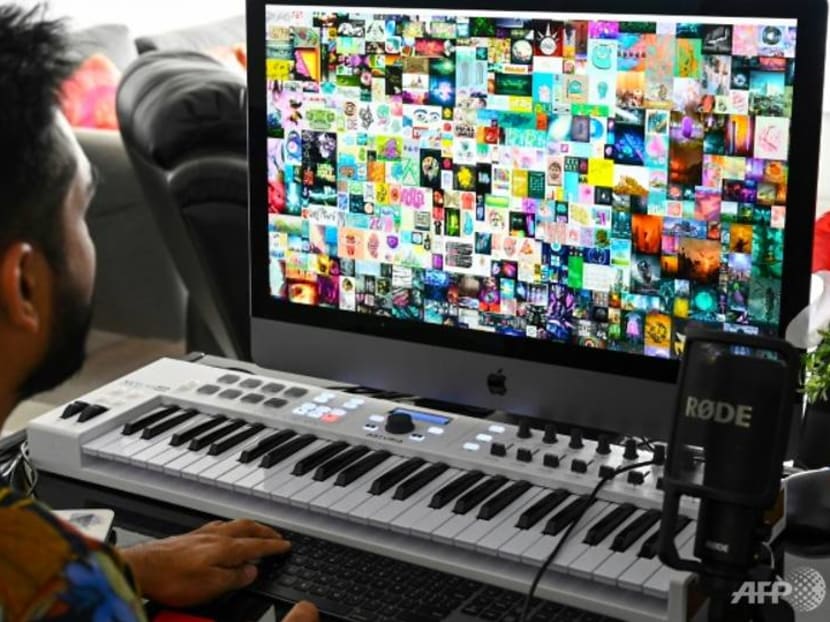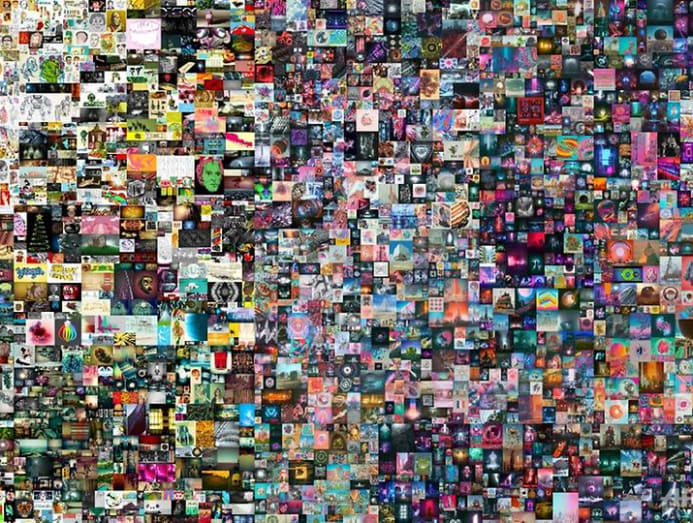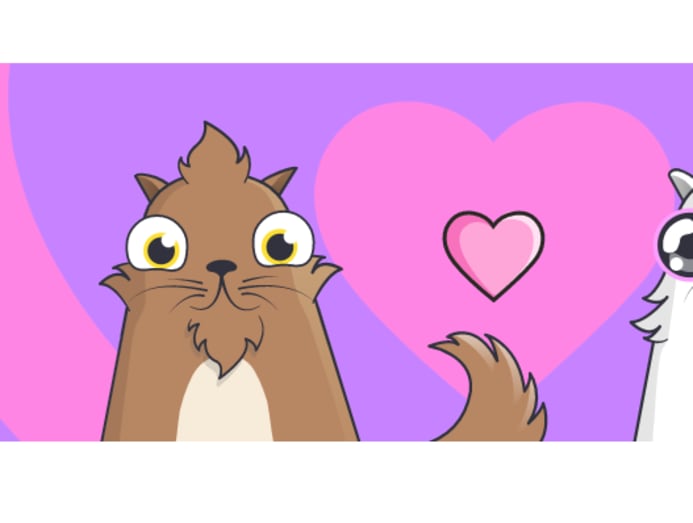The NFT boom: Is digital art the next tech bubble?
Collectors have been shelling out big bucks on digital collectibles known as NFTs, or non-fungible tokens. But the boom in NFTs is also sparking concerns about a bubble. Money Mind reports.

Singapore-based investor Vignesh Sundaresan bought the world's most expensive NFT from US artist Beeple in March, highlighting how virtual work is establishing itself as a new creative genre. (Photo: AFP/Roslan Rahman)
SINGAPORE: A collage of digital images by the artist known as Beeple - sold, for US$69 million.
The first tweet by Jack Dorsey, CEO of Twitter - sold, for US$2.9 million.
But the individuals that bought these digital items received nothing tangible back.
Instead, they got a digital token known as an NFT, which stands for non-fungible token.
When something is fungible, it can be exchanged for something else. So if you have five S$1 notes, they can be exchanged for a single S$5 note.
Non-fungible items are not mutually interchangeable, because they have unique qualities.
Examples could include Pokemon cards, limited edition sneakers, or the Mona Lisa.

READ: Digital-only artwork by American artist fetches nearly US$70m at Christie's auction
In the digital assets context, an NFT is essentially a proof of provenance, or details about the origin, authenticity, ownership and transaction details.
The underlying assets of NFTs can be anything from a meme to a digital self-portrait, and even an “online pet”.
That is how NFTs first went mainstream in 2017- with CryptoKitties.
CryptoKitties was a blockchain-based virtual game that allows players to adopt, raise and trade virtual cats.
Back then, some of these virtual cats were already trading for more than US$100,000.

The NFT market was worth about US$250 million dollars last year. From January to March 2021, turnover has already reached approximately US$200 million dollars.
"NFTs support so many different industries, whether it’s digital art, or in-game items, or music, even domain names. I will say the potential is huge," said Ms Journey Li, APAC marketing manager at Elliptic, a blockchain consultancy.
Stakeholders in the crypto space say that NFTs are a new and different form of asset class.
But the underlying asset of an NFT, like a digital art piece, can be replicated easily the very next day.
So why pay so much for something that you can download for free on the Internet?
Mr Kelvin Goh, head of wealth advisory at OCBC Bank points out that as with any transaction, demand and supply comes into play.
“At the end of the day, whatever price that I pay, I assign a certain value to that token. In order to sell it, I will need someone else to assign a greater value, or greater price to that token. So as things stand, there’s a lot of interest.
"The debate is about whether or not the price you paid equates to the value that you’re deriving from it. I could pay a record sum. I would essentially need someone else to pay me a higher sum to derive a profit from it. So traditional methods of valuation may not work so well.”
For digital art collector Cao Yin, buying NFTs helps him to record the milestones of both physical and digital events.
He bought his first NFT in 2017, paying around US$1,000 to $2,000 in the cryptocurrency Ethereum. He says those items are now priced at around US$1 million.
He doesn’t intend to sell.
"The original reason for collecting these items is to collect and not transact and not to buy low sell high and profit from it," said Mr Cao.
"For me, I come from a collector’s point of view to record our crypto and digital era development at every milestone and I collect them in my vault," he added.
READ: NFTs are hot. So what are they?
For now, NFTs can only be bought using cryptocurrencies.
Many of the recent headline-making NFT purchases have been made by crypto investors.
This includes the US$69 million NFT by the artist known as Beeple. The sale makes him “among the top three most valuable living artists”, according to Christie’s, the auction house that handled the transaction.
Shortly after the sale, Beeple confirmed that the sale proceeds were converted into cold hard cash.
With the recent NFT trading boom, concerns have been raised that this is the newest crypto bubble.
"If take the whole crypto or whole NFT as a whole, there’s a bubble. There are many bubbles and the bubbles are quite big. But the gems, the masterpieces are actually undervalued," said Mr Cao.
READ: NFT digital artwork by humanoid robot Sophia up for auction
OCBC's Mr Goh added: “I wouldn’t say it’s a bubble but I do think that there’s a level of trough in the markets and it’s adding on to itself because of the high prices and the increased attention.
"The average investor should be mindful with regards to the platform that they are investing in and to just look at these assets for what they are."
Meanwhile, the advice from Elliptic's Ms Li: “The general rule of thumb is - do not buy it because you believe the value will go up. Just buy it like you collect any other things, like collectibles, Pokémon cards and don’t expect to make money out of it.”





